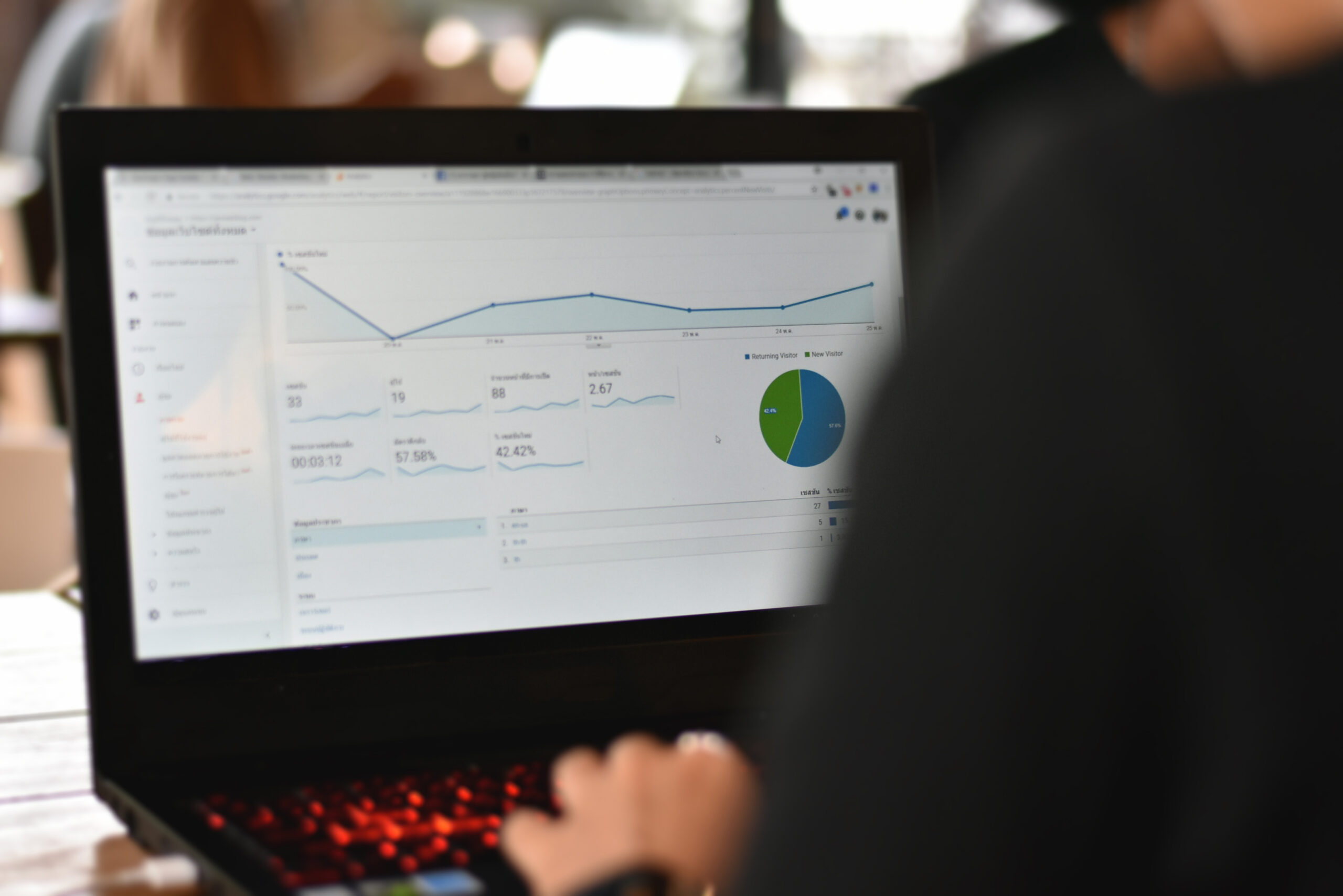
Everything Marketers Need to Maximize Their GA4 Dashboard
Everything Marketers Need to Maximize Their GA4 Dashboard
Danny Shepherd, CO-CEO • Intero Digital • November 16, 2023
In a world driven by data, Google Analytics is a marketer’s best friend. Google Analytics 4 (GA4) is a new, revamped version of the platform that offers more comprehensive insights into user behavior. It offers advanced event tracking, custom reports, and real-time data.
One of the many advantages of GA4 is its user-centric approach. Unlike previous versions, the GA4 dashboard provides a holistic view of customer interactions across multiple devices and platforms. It features machine learning to help you uncover trends, seize opportunities, and identify potential issues before they become problematic.
Capabilities of the GA4 Dashboard
Here is an overview of the numerous GA4 capabilities:
• Enhanced user-centric tracking: GA4 offers a holistic view of user behavior across platforms and devices, essential for mapping the customer journey.
• Advanced event tracking: GA4 event tracking is simplified, allowing customization for tracking specific actions like button clicks.
• Cross-platform tracking: GA4 provides better cross-platform tracking, allowing you to understand how users move between websites and apps, making it essential in a multi-channel marketing landscape.
• Machine learning insights: GA4 utilizes machine learning to provide automated insights and predictions, helping you identify trends, opportunities, and potential issues more effectively.
• Privacy and compliance: GA4 ensures compliance with evolving data privacy regulations, safeguarding user trust.
• Audience building: GA4 simplifies audience building and segmentation, allowing you to create highly targeted audiences and personalized experiences for your audiences.
• E-commerce and conversion tracking: GA4 offers improved tracking of e-commerce metrics, including GA4 conversions, cart abandonment, and sales.
• Event-based conversions: Instead of relying solely on page views, GA4 allows you to set up event-based conversions for more accurate tracking.
• Real-time reporting: What can you find in the real-time report from GA4? You have immediate access to everything from user locations to currently trending products on your site for quick decision-making and performance tracking as it happens.
• Custom reporting: GA4 provides enhanced, flexible reporting options and the ability to create a GA4 custom dashboard.
With these recent Google Analytics changes, knowing how to leverage GA4 features for your marketing goals is essential. Below, our team has put together a GA4 crash course to help you unlock powerful insights from the data you already have.
Key Metrics on Your GA4 Dashboard
The first step in effectively using GA4 is setting up your GA4 custom dashboard with metrics that align with your specific marketing objectives and KPIs. This dashboard should be a central location for the most critical data points relevant to your goals. However, your Google Analytics 4 dashboard isn’t meant to remain static. It needs to be updated often to align with your evolving marketing objectives. This will ensure you consistently track the most relevant metrics for your current campaigns.
- Traffic and user metrics: Include “Users” for audience size, “New Users” to gauge acquisition, and “Sessions” to assess overall engagement. “Session Duration” is critical for understanding content interest.
- Traffic sources: Add “Source/Medium” to evaluate the effectiveness of different marketing channels. “Referral Traffic” and “Organic Search Traffic” can offer insights into SEO performance, search relevance, and top referral sources.
- Audience demographics and interests: Metrics such as “Age,” “Gender,” and “Location” can refine your targeting. “Interests” help with content and ad personalization.
- Behavior metrics: Metrics like “Pageviews,” “Bounce Rate,” and “Exit Rate” provide a snapshot of user engagement and can identify potential pain points. Add “Event Tracking” and “Site Search” for a fuller picture.
- Conversion metrics: “Goals” can measure user conversions, while e-commerce-specific metrics track sales and product performance.
- Retention metrics: “Cohort Analysis” is useful for spotting user retention trends over time.
- Custom metrics and dimensions: Tailor your tracking with “Custom Event Tracking” and “Custom Dimensions” to get more granular data that’s particularly relevant to your business.
- Site speed metrics: Include “Page Load Time” and “Core Web Vitals” for UX and SEO insights.
- Mobile metrics: As mobile traffic continues to rise, metrics like “Mobile and Tablet Traffic” and, if applicable, “App Analytics” become increasingly vital.
Remember, your GA4 dashboard should be an evolving tool. Customize it to display the most significant metrics for your current campaigns and make adjustments as your marketing goals shift.
How to Use GA4 to Build Data-Driven Strategies
Once your Google Analytics 4 custom dashboard is up and running, you can focus on implementing optimization strategies based on the data you collect.
1. Content optimization
Use metrics such as page views and session duration to identify your best-performing content. Use this information to update and improve underperforming pages.
2. Conversion rate optimization
Employ GA4 event tracking to identify essential user interactions, such as contact form submissions or button clicks. By focusing on these interactions, you can make the conversion process more efficient.
3. Audience segmentation
Utilize GA4 segments for more advanced audience targeting. These segments can be built based on a variety of criteria, such as user behavior or geographic location, allowing for more personalized messaging.
4. Mobile optimization
With increasing web traffic from mobile devices, mobile optimization is more critical than ever to ensure your site loads quickly and is easy to navigate on smaller screens.
By continuously updating your GA4 custom dashboard to align with your evolving strategies, you can ensure you’re making data-driven decisions.
GA4 Data Privacy and Compliance
As you leverage GA4’s vast array of features, it’s crucial to recognize what data controls Google Analytics 4 offers advertisers. These data controls are robust and designed to ensure compliance with evolving data privacy laws. This capability has become a necessity in today’s increasingly regulated digital landscape. With GA4, you’re gaining insights into user behavior and operating within an ecosystem that respects user privacy and regulatory demands.
Google Analytics 4 is a powerful tool that equips marketers with advanced tracking, machine learning insights, and user-centric data analytics. While there may still be some GA4 limitations, the opportunities to gain a deeper understanding of your audience and improve your marketing efforts far outweigh them.

